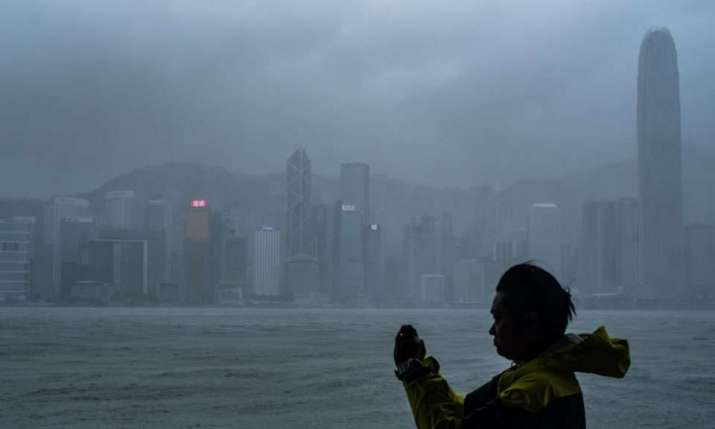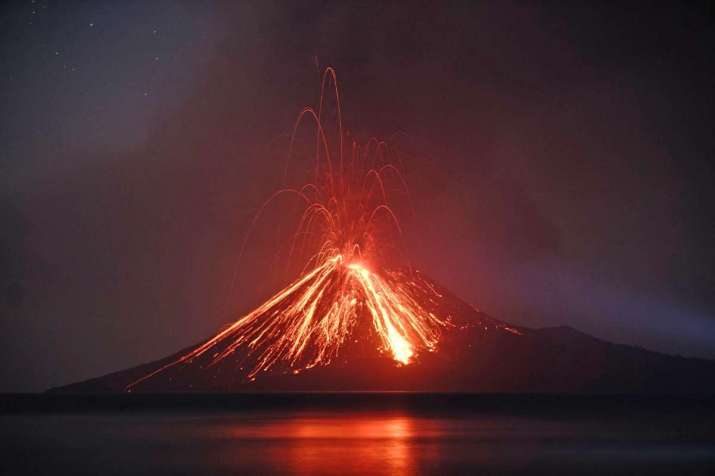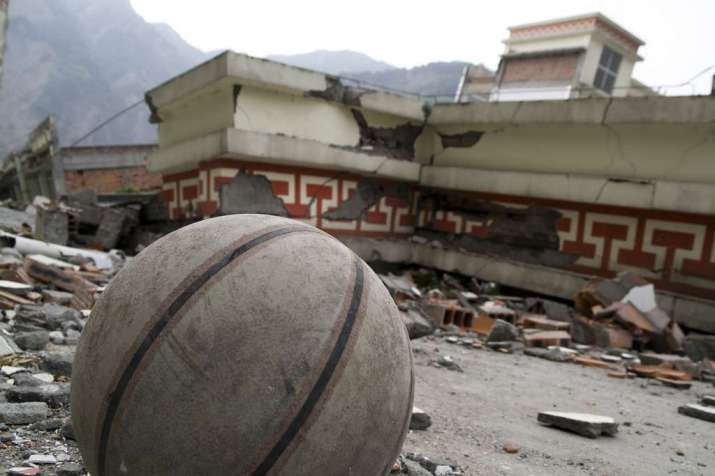FEATURES|THEMES|Commentary
Buddhistdoor View: Nature’s Grand Ferocity and Human Humility
 Typhoon Mangkhut batters Hong Kong on 16 September. From atimes.com
Typhoon Mangkhut batters Hong Kong on 16 September. From atimes.comHurricanes (in the North Pacific) and typhoons (in Southeast Asia) are systems of tropical cyclones that occur in tropical and sub-tropical climates. Typhoon and hurricane seasons have always been intense, and this year was no different. Hurricane Florence made landfall in North Carolina on 14 September and Typhoon Mangkhut arrived a day later in the Philippines, before raging across Hong Kong and Macau. Both tropical storms proved fatal, with Florence leaving 36 dead and Mangkhut causing 127 known deaths as of the date of publication.
Mangkhut was the strongest tropical storm that Hong Kong had seen since records began, and social media was alight with videos and images of uprooted trees, shattered windows, and swaying skyscrapers. As powerful as Mangkhut was, Hong Kong escaped with no significant casualties or widespread destruction.
The reality is that there have been, and will continue to be, natural events far more catastrophic all over the world, such as the 2008 Sichuan earthquake, in which more than 69,000 people lost their lives. In 2011, 15,896 people died as a direct result of the Tōhoku earthquake and tsunami. And across the world, millions of people live in places where tectonic plates shift, or volcanoes slumber.
Throughout history, literature, art, and culture have sought to relativize human existence with that of Mother Nature. While much of civilization has celebrated powerful leaders, the rise and fall of empires, and the transformation of civilizations by religion or conquest, there has always been a sense that ultimately these usually gripping travails seem so petty and fragile in the face of a higher power—Gaia’s mercy.
Terrifying as these awe-inspiring natural phenomena are, they are also undeniably wondrous in the most basic sense: they rightly evoke awe. They put us in our rightful place, as little mammals living out our brief lives and legacies on a blue and green rock floating in infinite space. They are the ultimate humblers of our overweening, androcentric pride. They are good reminders against our misplaced instinct that we are important in any cosmic sense.
 Mount Sinabung, Indonesia. From nbcnews.com
Mount Sinabung, Indonesia. From nbcnews.comEvents that cause human suffering on unmatched scales have always been with us. Great Flood stories have been a Middle Eastern folk memory for millennia, from the Mesopotamian tale of Gilgamesh’s encounter with Utnapishtim to the Judeo-Christian story of Noah’s Ark. Both tales see the flood as divinely sent, and Noah and Utnapishtim survive only because of Yahweh or Enki’s favor. The series of disasters sent by God to the pharaoh in Exodus and the apocalyptic scenarios in the Book of Revelation all reflect a dimension of spiritual reflection to various natural catastrophes, such as drought, storms, and plagues. Human vocabulary and literature is enriched by eloquent descriptions of nature, yet many of these descriptions contain value-laden concepts. Even the term “natural disaster” is somewhat of a misleading description, for in Mother Nature’s eyes there is no concept of disaster. It is a human concept.
Accepting the beauty of nature in all its forms is surely an incomprehensible idea to the people who have experienced losing their loved ones, their homes, or had their lives otherwise affected by these natural occurrences. It should not be pontificated about by pastoral professionals at a theoretical level, but instead be articulated in intimate, compassionate settings that focus on personal healing and practical recovery as well as acceptance and making peace.
In eco-conscious expressions of religion and spirituality, nature is not something to be tamed, but to be accepted as a force beyond our moral judgments of good or bad. Nature, as a collective organism, neither favors nor despises human life. This kind of harmony between humanity and the natural world is articulated in many different spiritualties. We should be clear-eyed about the real human suffering and pain that ensues following these natural displays of force, but we should not stay gloomy about our place in the cosmos either.
 Yingxiu Town in the aftermath of the Sichuan earthquake of 2008. From flickr.com
Yingxiu Town in the aftermath of the Sichuan earthquake of 2008. From flickr.comSeeing our projections for what they are, of course, does not mean we abandon those whose physical safety or livelihoods are affected by typhoons, wildfires, or earthquakes, or other violent natural activity. Similar to how toilet signs today read “Differently abled” or “Specially able” for the special needs of members of society, we should consider more carefully how we project our biases and assumptions through language and societal or cultural norms.
This is a larger project than a simple preoccupation with semantics and attempting to argue that disaster relief should not be called “relief.” Rather, the idea is to reconsider how our everyday, unconscious replications of certain concepts is hindering us from being free to see the world and nature for what it truly is: neither benevolent nor unkind; not out to get us but not out to save us either. More importantly, by looking deeply into the interconnectedness of the universe—the nature of the Earth’s ecosystems, its formation, and life cycles—we can make peace more quickly with the pain of loss and see with more clarity the true place of humanity in this beautiful, and yes, often frightening world.
We should appreciate our relationship with Gaia for what it is: the same as any other animal on Earth. The universe holds no particular malevolence or goodwill towards us. We can align ourselves with the flow and harmony inherent in the cosmos while maintaining and improving disaster research and prevention. If we can accept all of Mother Nature’s faces, we will hopefully be able to weather better the events that tragically destroy lives, communities, and infrastructure simply because they happen to be there.
Related features from Buddhistdoor Global
Surviving the Typhoon Inside Our Mind
The Greatest Gift: “For Our Long-lasting Benefit and Happiness”
A Call for Meditation in Action on Climate Change
Buddhistdoor View: Mitigating and Managing Local and Ecological Crises














